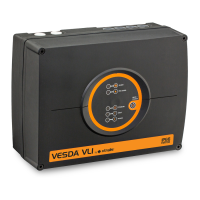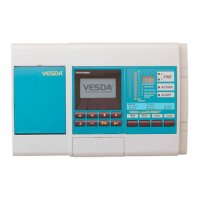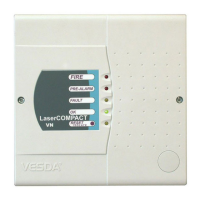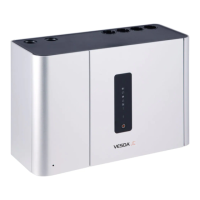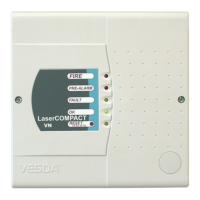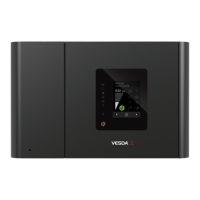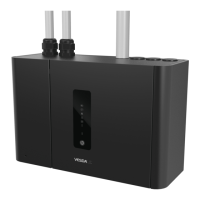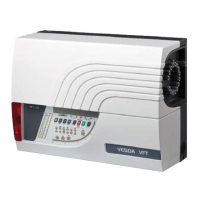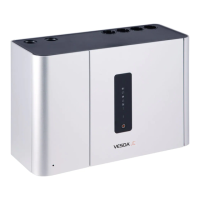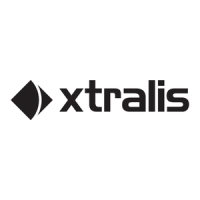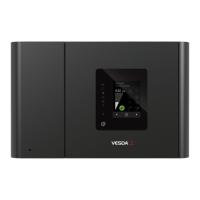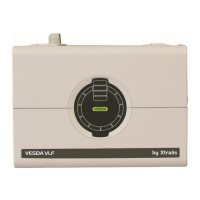Do you have a question about the Xtralis VESDA and is the answer not in the manual?
Gathers necessary site information, design records, and site plans before visiting.
Involves checking cabling, powering up, and performing preliminary system checks.
Details system configuration and setting of alarm thresholds for detectors.
Describes tests for pipe network integrity, relays, detectors, and overall system performance.
Covers final documentation, signatures, and distribution for system handover.
Critical information gathering and document review before site visit.
Lists required client and site details for the commissioning form completion.
Details steps to be performed once physically present at the customer's site.
Focuses on normalizing airflow and smoke testing for detector response and pipe integrity.
Configures common settings for VLC, VLS, and VLP detectors like date, time, units, and zones.
Specific configuration steps for VESDA VLP detectors, including air flows and smoke thresholds.
Details on setting airflow parameters for VESDA VLS detectors.
Details on setting smoke thresholds for VESDA VLS detectors.
Details on setting airflow parameters for VESDA VLC detectors.
Details on setting smoke thresholds for VESDA VLC detectors.
Explains how to navigate and enter the main menu modes for configuration.
Details the different access levels and their corresponding codes for configuration.
Lists and describes key programmable functions for the VFT-15 detector.
Explains smoke testing to prove pipe integrity and measure response time, including considerations for stratification problems.
Lists specific tests available for detectors, such as smoke alarm, fault, and airflow tests.
Gathers necessary site information, design records, and site plans before visiting.
Involves checking cabling, powering up, and performing preliminary system checks.
Details system configuration and setting of alarm thresholds for detectors.
Describes tests for pipe network integrity, relays, detectors, and overall system performance.
Covers final documentation, signatures, and distribution for system handover.
Critical information gathering and document review before site visit.
Lists required client and site details for the commissioning form completion.
Details steps to be performed once physically present at the customer's site.
Focuses on normalizing airflow and smoke testing for detector response and pipe integrity.
Configures common settings for VLC, VLS, and VLP detectors like date, time, units, and zones.
Specific configuration steps for VESDA VLP detectors, including air flows and smoke thresholds.
Details on setting airflow parameters for VESDA VLS detectors.
Details on setting smoke thresholds for VESDA VLS detectors.
Details on setting airflow parameters for VESDA VLC detectors.
Details on setting smoke thresholds for VESDA VLC detectors.
Explains how to navigate and enter the main menu modes for configuration.
Details the different access levels and their corresponding codes for configuration.
Lists and describes key programmable functions for the VFT-15 detector.
Explains smoke testing to prove pipe integrity and measure response time, including considerations for stratification problems.
Lists specific tests available for detectors, such as smoke alarm, fault, and airflow tests.
| Detection Principle | Light scattering |
|---|---|
| Sampling Method | Aspirating |
| Sensitivity Range | 0.005 to 20% obs/m |
| Alarm Levels | Alert, Action, Fire 1, Fire 2 (programmable thresholds) |
| Communication | Ethernet, Modbus |
| Power Supply | 24 VDC |
| Operating Temperature Range | 0°C to +39°C (32°F to +103°F). Consult specific datasheet. |
| Approvals | UL, FM, EN54-20 |
| Typical Applications | Data centers, clean rooms, warehouses |
| Humidity Range | 10% to 95% RH (non-condensing) |
